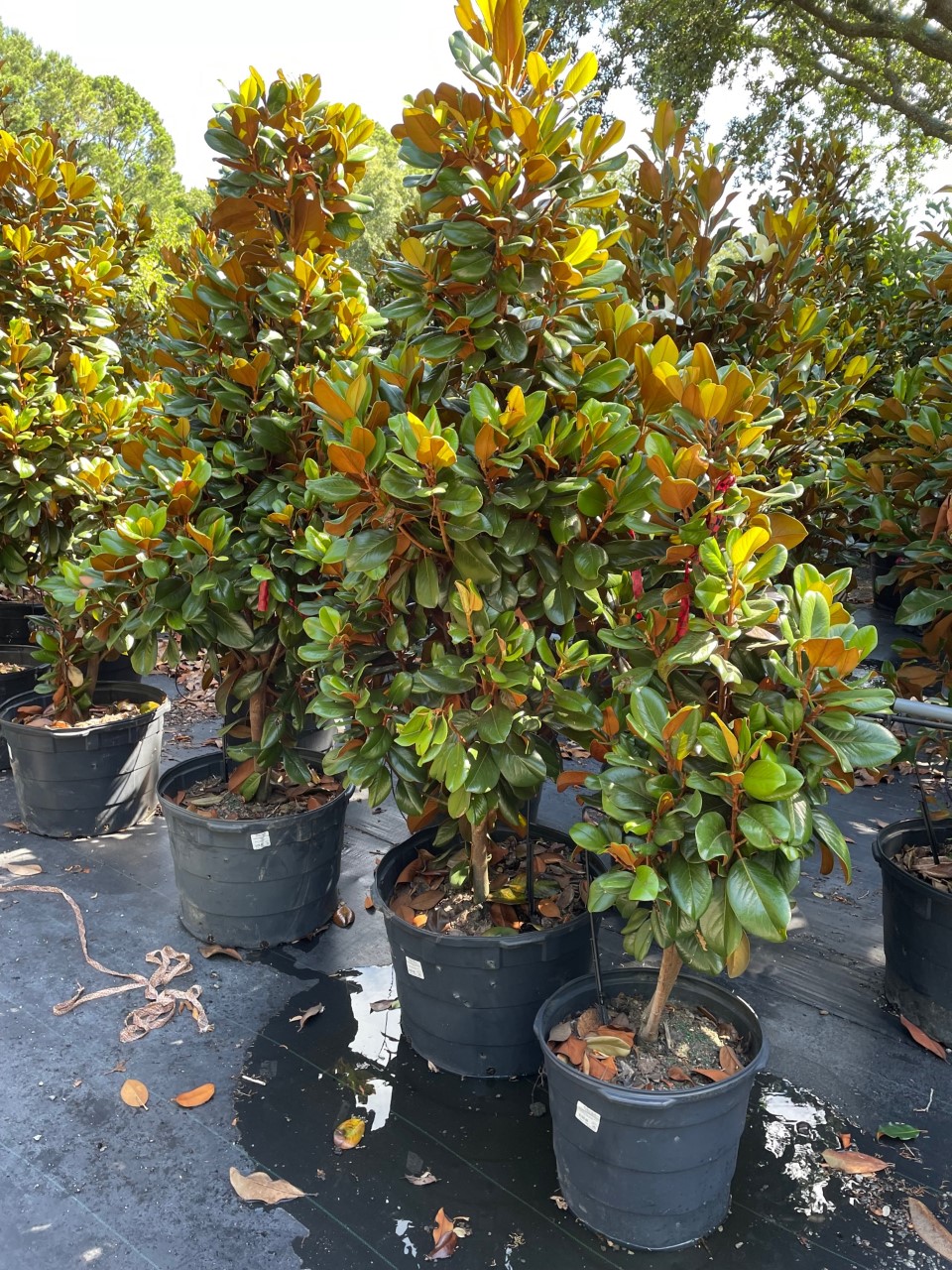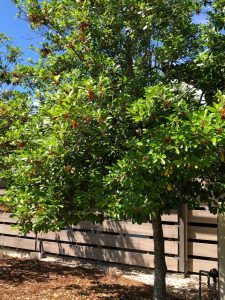There are many considerations to make when landscaping with small trees (under 20 feet) in the landscape that are not suitable for large trees. Some of the trees discussed can at times be considered large shrubs depending on definitions and opinions. For the purpose of this article, if it reaches 15 to 20 feet consider it a tree.
Choosing small trees for the right setting involves a number of reasons that could include the need for more privacy from other homes, use as a sound barrier from busy roads, hiding your utility area of the landscape or something unattractive nearby and making sure power lines are not obstructed. Other considerations might include soil types, drainage and holding capacity of the soils, irrigation needs, rate of plant growth and maturity height at 20 feet. Below are a few to consider for the Panhandle of Florida.
Little Gem Magnolia (Magnolia grandiflora ‘Little Gem’) and Teddy Bear Magnolia (M. grandiflora ‘Teddy Bear’) are strong hardy plants once established (within the first 6 months to a year). Both are evergreen with dark green foliage. The ‘Little Gem’ will grow to 20 feet tall by 15 to 18 feet wide. As it matures it tends to become more open and less dense which adds a nice character to show parts of the lower limbs. The ‘Teddy Bear’ will grow to 18 to 20 feet tall but at an even slower rate of maturity to 12 to 15 feet wide while maintaining its density of foliage from bottom to top. It may take a little work to locate the ‘Teddy Bear’ Magnolia.

Photo courtesy: Stephen Greer Teddy Bear Magnolia (Small compact grower)
Several hollies to consider would include the Cassine Holly ‘Tensaw’ (Ilex cassine ‘Tensaw’) and American Holly (Ilex opaca). Both are evergreen and produce red berries during the fall that are bird favorites. They have similar heights of 15 to 20 feet and widths of 10 to 12 feet. Pruning can assist in shaping and slowing these measurements, but keep in mind this will change the look of the tree and create a more formal plant presentation.
The Fringe Tree (Chionanthus virginica) has been a popular tree southeast U.S. for many years. It brings a bright spot to the landscape with white flower panicles that cover the tree in mid to late spring depending on location. For a full color effect, plant it with an evergreen hedge behind it. This oval deciduous tree will grow to 12 to 20 by 10 to 15 wide. The dark blue fruit appears in the fall and serves as good bird food source. This fruit is usually hidden behind the foliage. There might even be a nice yellow leaf change in the fall if temperatures and weather allow.
There are so many more trees to discuss and limited space to discuss them. Visit your local UF IFAS Extension office for additional assistance or visit the UF IFAS online for additional articles.
- Deer Damage in the Landscape - February 22, 2024
- Gardeners: A Critical Link to Protecting Our Water - January 18, 2024
- Propagating Plants by Leaf and Cane - December 14, 2023

